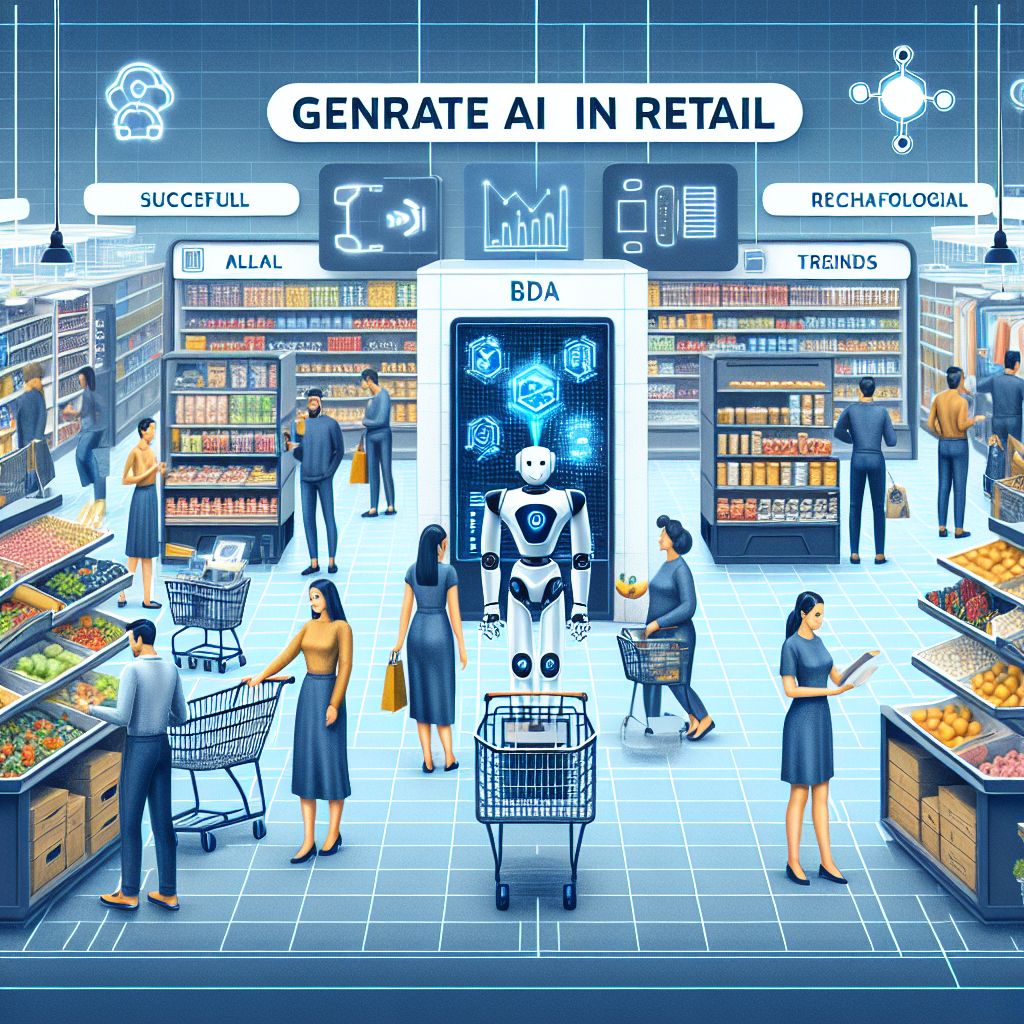AI in Retail: Transformative Use Cases, Success Stories, and Challenges

```html
The retail industry is undergoing a radical transformation driven by advancements in Artificial Intelligence (AI). From enhancing customer experiences to optimizing supply chains, AI technologies are helping retailers stay competitive in a rapidly evolving market. In this blog post, we'll dive into various use cases of AI in retail, highlight success stories, and discuss the challenges and lessons learned along the way.
Personalized Shopping Experiences
One of the most impactful applications of AI in retail is personalized shopping. Retail giants like Amazon and Netflix use AI algorithms to analyze customer data and provide personalized recommendations. This enhances customer satisfaction and increases sales by showcasing products that are relevant to individual preferences.
However, implementing AI for personalization comes with challenges. A clothing retailer found that their recommendation system initially provided generic suggestions, failing to captivate customers. This highlighted the importance of continually refining algorithms and ensuring they are trained on high-quality, diverse datasets to deliver genuinely personalized experiences.
Inventory Management
AI is revolutionizing inventory management by predicting demand and optimizing stock levels. Companies like Zara and Walmart use AI to analyze sales data, weather patterns, and social media trends to forecast demand accurately. This helps in minimizing stockouts and overstock situations.
Despite its benefits, AI in inventory management is not without risks. A retail chain faced challenges when their AI system misread seasonal trends, resulting in surplus inventory of certain products. This underscored the need for integrating human judgement with AI insights to better adapt to unexpected market fluctuations.
Customer Service and Chatbots
AI-powered chatbots are enhancing customer service in retail. Brands like H&M and Sephora deploy AI chatbots to assist customers with product queries, order tracking, and personalized shopping advice. This improves customer engagement and frees up human agents for more complex tasks.
But AI chatbots also have their limitations. A popular online retailer encountered issues when their chatbot failed to understand nuanced customer inquiries, leading to frustration. This highlighted the necessity of robust natural language processing and the value of combining AI with human support for more intricate customer service needs.
Supply Chain Optimization
AI is helping retailers optimize their supply chains, making them more efficient and resilient. Companies like Target and Nike use AI to predict potential disruptions, optimize routes, and manage supplier relationships. This leads to reduced costs and improved supply chain efficiency.
However, AI-driven supply chain optimization can encounter obstacles. A multinational retailer faced challenges when their AI model’s predictions failed to account for sudden geopolitical changes, causing supply chain delays. This highlighted the need for flexible AI systems that can quickly adapt to real-world complexities.
Visual Search
AI is improving the way customers search for products online. Visual search tools, like those used by Pinterest and ASOS, allow customers to upload images and find similar products through AI image recognition. This offers a seamless shopping experience and helps customers find exactly what they are looking for.
Despite its advantages, visual search technology has its challenges. An e-commerce platform found that their visual search tool misidentified products with similar colors but different styles, leading to customer dissatisfaction. This illustrated the importance of continually improving image recognition algorithms for better accuracy.
Pricing Optimization
AI is enabling dynamic pricing strategies, allowing retailers to adjust prices based on real-time data. Companies like Uber and Airbnb leverage AI to analyze market demand, competitor prices, and customer behavior to set optimal prices dynamically. This maximizes revenue and competitive advantage.
Despite the potential upsides, dynamic pricing presents challenges. A retailer experienced backlash when their AI system raised prices excessively during peak demand periods, causing customer frustration. This underscored the importance of balancing profit optimization with customer satisfaction and maintaining transparency in pricing strategies.
The Future of AI in Retail
The future of AI in retail holds exciting prospects with advancements in augmented reality shopping experiences, AI-driven sustainability practices, and more sophisticated customer analytics. AI's capabilities in data analysis, automation, and personalization will continue to drive significant innovations in the retail sector.
To fully harness AI’s potential in retail, addressing ethical considerations, ensuring data privacy, and fostering collaboration between technologists and retail experts are crucial. A balanced approach that combines AI technology with human intuition will be key to navigating the complexities and opportunities AI brings to the retail industry.
In conclusion, AI is transforming retail through personalized shopping experiences, inventory management, customer service chatbots, supply chain optimization, visual search, and pricing strategies. Success stories from industry leaders like Amazon and Walmart illustrate AI's transformative impact, while challenges emphasize the need for continuous refinement and ethical practices. As AI technology advances, its role in retail will expand, offering new opportunities for innovation, efficiency, and enhanced customer satisfaction.
```



